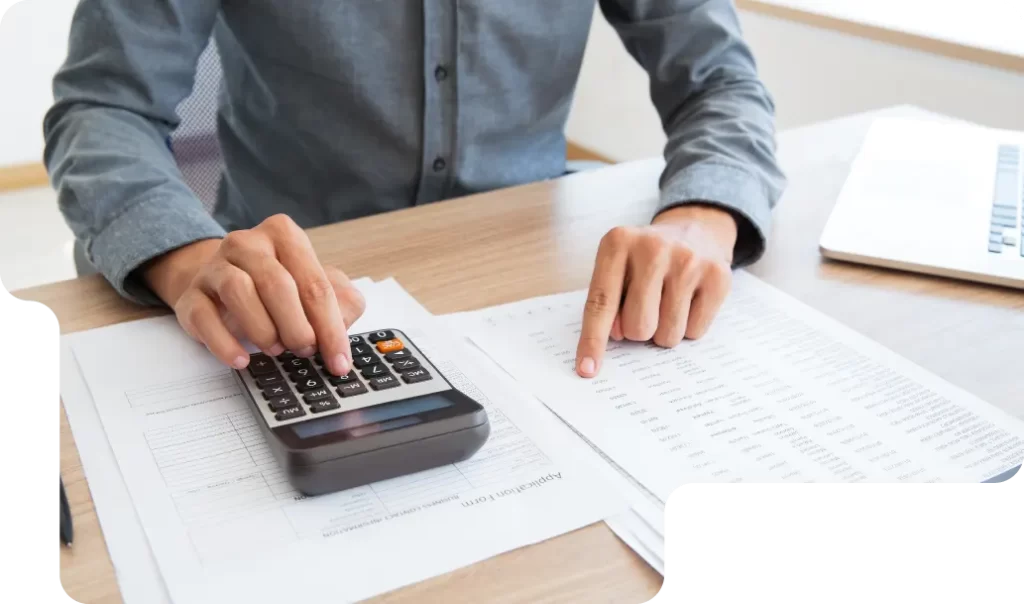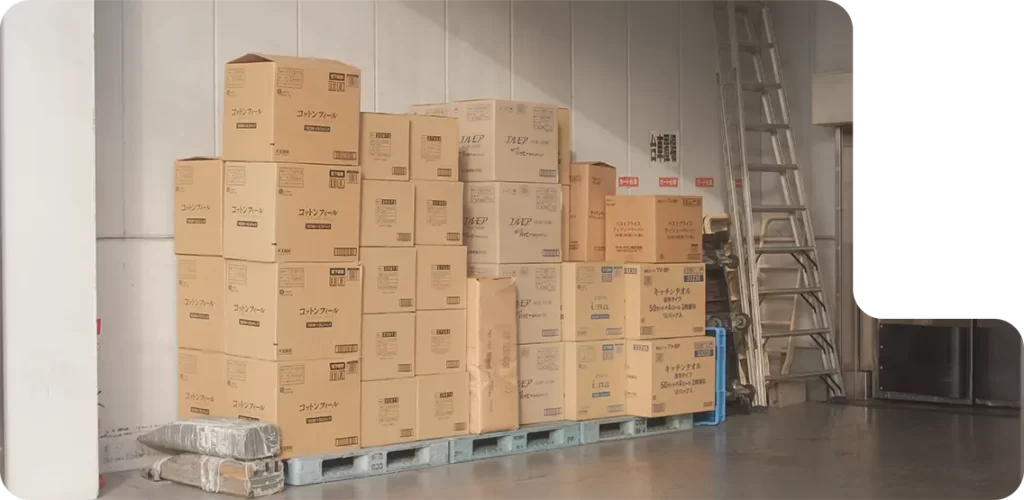Table of Contents
More Inventory Content
Share This
Get the latest e-commerce industry news, best practices, and product updates!
Table of Contents
Share This
More Inventory Content
Get the latest e-commerce industry news, best practices, and product updates!
Any business involved in selling goods needs to determine ending inventory. The corresponding formula for ending inventory gives companies essential insight into the overall value of products still available for sale at the end of an accounting period. In this article, we will discuss what is ending inventory, its significance, how to calculate it, ending inventory methods, and more related aspects.

What is ending inventory?
A simple way to define ending inventory is the book value of merchandise held when an accounting or financial reporting period ends. At the close of an accounting period, a company holds goods that are still available for sale, and this metric indicates the value of these goods.
This number is essential to evaluate the cost of goods sold (COGS) and the ending inventory balance. Moreover, the ending inventory of a company must be incorporated on its balance sheet and is particularly significant when recording financial information. The cumulative cost of this inventory helps the company determine the cost of goods sold.
The term “ending inventory” entails three unique types of materials, described below:
- Raw materials: They are the ones utilized in the practical production procedure. Alternatively, you can understand it as the materials ready to be mass-produced into completed goods.
- Work-in-process: It involves materials that pass through the conversion process into consumer goods.
- Finished goods: Finished goods pass through the entire production process and are ready to be sold to consumers.
Ending inventory is crucial in calculating the ‘cost of goods sold’. Calculating the dollar sum of ending inventory through various valuation methods is possible. The method selected to allocate a dollar value to stock and the COGS influences values on the balance sheet and income statement.
The number of units mentioned in the ending inventory is identical in all methods. However, the dollar value varies based on the chosen inventory valuation method.
Three widespread valuation methods for ending inventory are as follows:
- FIFO (first in, first out)
- LIFO (last in, first out)
- Weighted-average cost
The later sections discuss these methods in detail.

How to account for ending inventory?
The accounting for inventory highlights the process of determining the precise unit counts containing ending inventory and subsequently allocating a value to these units. Once these unit counts are determined, the resultant costs record an ending inventory value and calculate COGS (cost of goods sold) for the particular reporting period.
The corresponding fundamental inventory accounting activities involve the following aspects:
- Determining Ending Unit Counts
- Enhancing Record Accuracy
- Carrying out Physical Counts
- Assessing Ending Inventory
- Assigning Costs to Inventory
- Allocating Inventory to Overhead
Ending inventory is logged at its procurement cost. If the retail price of inventory items has dropped, they need to be logged at the lower market value or cost. The peril of such recording significantly increases if the inventory is retained for an extended period or if market prices are unstable.

How to interpret ending Inventory?
A trend of those ending inventory balances increasing with time can specify that certain inventory is becoming outdated. This is because the amount must stay nearly the same as the quantity of sales. On the other hand, a trend of decreasing ending inventory balances with time conveys that the production capacity can’t keep abreast of customers’ expectation levels.

Why is ending inventory important?
- It is inevitable to calculate ending inventory since the product businesses have to uphold accurate balance sheets and generate consistent reports.
- If the accurate value of inventory is recorded, it will avert incongruities in future reports.
- If ending inventory is understated or overstated, it would influence the balance sheet’s gross margin, COGS, and total income.
- Determining the value of ending inventory facilitates a company to come up with improved sales and marketing strategies. These strategies eventually lead to the selling of more products in the future.
Let’s understand the reason for its significance in more detail:
Several companies adopt a physical inventory count at the close of a financial year to validate the inventory they have on-hand. It is advantageous to carry out a count of physical inventory because it helps the company know what inventory is on-hand compared to the one recorded through their computer systems.
Frequently, auditors need this verification. During the verification, if the tally depicts a considerable difference (between the company’s actual ending inventory and the one listed in the automated system), there might be shrinkage or any other issues. The shrinkage implies a stock loss due to theft, problems with the delivery, accounting or vendor errors, or other reasons.
If the ending inventory balance is undervalued, the net income for that period would also be undervalued.
Later reporting periods begin their starting balance with the ending balance from the last reporting period. Therefore, only a precise ending balance must get recorded on the financial statement. Ultimately, this assures high accuracy of imminent reports.
For manufacturers, the ending inventory number is crucial, especially if they face production inefficiencies and wish to investigate further.

Methods and examples of ending inventory
Discussed below are the most widespread methods employed for determining ending inventory:
FIFO Method First In, First Out:
The FIFO (first-in, first-out) method assumes that the oldest items bought for manufacturing goods were sold first. Through this method, you deduce that the first item purchased is the price of the first product being sold. Consequently, the FIFO ending inventory value derived this way represents the current price of the goods depending on the recent items purchased.
The FIFO method of calculating the ending inventory originated from the assumption that companies first sell their oldest items to ensure the newest things stay in stock.
Generally, business owners and accountants opt for FIFO periods of inflation because it generates a higher value of the ending inventory compared to the LIFO method.

LIFO Method Last In, First Out:
The LIFO (last-in, first-out) method comes into the picture when a company calculates its ending inventory based on the price of the last item bought. This method of finding ending inventory using LIFO assumes that the value of the previous product being bought equals the cost of the first item being sold and that the recent items purchased were first sold.
When determining the value of goods traded, this method considers the most recent items bought first and assigns older items to the ending inventory. It is essential to note that during inflationary periods, implementing the LIFO method during inflationary periods leads to a drop in ending inventory and net income values. Hence, accountants suggest businesses use the LIFO method when prices are decreasing.

Weighted Average Method:
This method assigns a value to the ending inventory and COGS determined from the price of products purchased or manufactured in an accounting period and then divided by the overall number of products bought or manufactured. Contrasting the FIFO and LIFO methods, the weighted-average cost method allocates the same value to every item purchased.
In simple terms, the calculation of this method involves dividing the total sum you expended on the inventory on-hand by the total number of products on-hand.
WAC method can be employed to balance FIFO and LIFO methods since it calculates an average of all costs of goods purchased in the ending inventory.
This method conveys the easiest way to determine ending inventory and is advised to use when every product is sold at an exact price.
The following section illustrates these three methods with examples:
Example Of FIFO Method:
Let’s take an example to clear confusion on how to find ending inventory using the FIFO method.
For example, after a few months, you purchased 5 of one SKU (stock-keeping unit) at $15 each and 5 more similar SKUs at $20 each. These 10 SKUs are in the available inventory and suppose you sell 5 of them through FIFO. You will sell the first ones being purchased at $15 each and register $70 as COGS (cost of goods sold).
Example Of LIFO Method:
The following example will give you a clear idea of how to find ending inventory using lLIFO
Suppose, for the same example as above, you purchased 10 of one SKU (stock-keeping units) at $15 each and 10 more similar SKUs at the price of $20 each. Now, if you sell 10 SKUs through the LIFO method, you will sell the 10 most recently purchased SKUs at $20 each. Consequently, the COGS (cost of goods sold) is $200 ($20 x 10).
Example Of WAC Method:
Suppose, during a financial year, you began with a beginning inventory balance of 200 pieces at $2.50 each. After that, you bought 400 more pieces at $3.50 each. So, the ending inventory includes 600 pieces at $3.25 each. So, the total value comes out as $ 1,950. While calculating, we assume that no purchases were made during this period.

How to find ending inventory using FIFO?
It is crucial to understand how to calculate ending inventory using FIFO, elaborated in the example below.
Suppose Company X records a beginning inventory of 500 items of product and buys 500 more items at $5 each in the initial month of a specific accounting period. Suppose in the next month this company buys 500 more items at $10 each. So, a total of 1,000 items were purchased in the accounting period being considered for a sum of $7,500. Suppose there are 250 items left at the ending period, which means that 750 items are sold during that period.
The FIFO method implies that the first units are sold first, and the corresponding calculation uses the most recent items. Hence, the ending inventory is 750 x 10 = 7,500, because $10 was the cost of the most recent items purchased. Hence, the ending inventory for Company X is $7,500.

How to find ending inventory using LIFO
With the following example, you will have a clear perspective on how to calculate ending inventory using LIFO:
Suppose Company Y purchases 1,000 items of product at $10 each in the initial month and 500 items more in the next month at the price of $20 each. The amount of the first set of items equals $10,000, and that of the second set of items equals $10,000. In this accounting period, the company holds 1,500 items and has expended $ 20,000 on purchasing these items. Suppose there are 500 units left after the accounting period. This implies that the company sold 1,000 units (1500-500 = 1,000).
The LIFO method implies that the last units acquired are sold first. Hence, the cost of ending inventory depends on the oldest units’ price. So, the ending inventory for that period will be 1,000 x 10 = $10,000.

How to find ending inventory using WAC?
Suppose Company Z bought 1,000 items at $5 each in the initial month of an accounting period. In the next month, the firm buys 1,000 more items at $10 each. The cost of the first set of items equals $5,000 (1,000 x 5), and the cost of the second set of items equals $10,000 (1,000 x 10). So, a total of 2,000 items are purchased, and $15,000 is spent on the inventory. Suppose there are 400 items left, so the company has sold 1,600 items in that period.
The WAC method calculates the weighted average of all items considered in the inventory. It is calculated as below:
Weighted average = (1,000 x 5) + (1,000 x 10) / 2,000 items = $7.50.
Ending Inventory = 400 x 7.50 = $3,000.

Why do you need to calculate ending inventory?
It is the business’ best practice to assess ending inventory, and also it’s a significant component of the accounting process. It helps determine a company’s net income.
Match record with physical inventory on-hand:
When you calculate the ending inventory, you can check whether your records match your physical inventory on-hand. If they don’t match, there may indicate shrinkage owing to accounting errors, theft, or other reasons. Also, if they don’t match up, you are paying excessively for the goods. So, you must reconsider your pricing tactic.
Ensure accuracy of future reports:
In a specific accounting period, ending inventory denotes the beginning inventory of the next accounting period. If the ending inventory is accurately calculated, it ensures that the beginning inventory for the next period is accurate.

How to ensure accurate ending inventory calculations?
The most significant factor in the calculation of ending inventory is obtaining an accurate inventory value. The manual method of counting inventory is monotonous; therefore, many businesses today emphasise accurate calculations of ending inventory.
For accurate calculations of ending inventory, data integrity is crucial. Performing this accurate calculation after every accounting period helps a company determine actual and expected inventory. Consequently, the company can adopt strategies to reduce inventory shrinkage and unforeseen stockouts.
Collaborating with a tech-based 3PL (third-party logistics) can self-regulate the monitoring process of inventory. Moreover, it provides real-time inventory reporting via a built-in cloud-based WMS (warehouse management system). Note that a fulfilment partner must also possess an SLA (Service Level Agreement) which contains regular inventory cycle counts that feature an accuracy rate of 99% to guarantee a highly accurate value of ending inventory.

Ending inventory formulas
Here is the ending inventory formula:
Ending Inventory = Beginning inventory + net purchases – COGS
The calculation involves the following steps:
Step 1: Firstly, you need to find a company’s inventory at the start of the year, which you can get from the stock book. Next, it is vital to confirm the same with the accounts department. The value of the inventory at the start of the year comprises finished, semi-finished and raw material inventory.
Step 2: In this step, you need to assess the inventory bought from the company’s purchasing department throughout the year. Essentially, it would be raw material inventory.
Step 3: Now you have to find out the cost of goods sold (COGS) from the production department of that company throughout the year. This usually includes the inventory value of raw material and semi-finished material.
Step 4: In the last step, you must derive the inventory at closing the accounting period. For that, you need to add merchandise purchased throughout the year to the inventory at the start of the year and then deduct the cost of goods sold.
So, ending inventory can also be calculated with the following ending inventory equation:
Ending Inventory = Beginning Inventory + Inventory purchased during the year – Cost of Goods Sold
Example:
Let’s take an example to understand how to calculate it.
Suppose a manufacturing company XYZ records the inventory at the beginning of the year as $3,000. The additional inventory bought during the year is $2,500, and the cost of goods sold disbursed in manufacturing the product is $3,500.
So, as per the formula,
Ending Inventory = $3,000 + $2,500 – $3,500 = $2,000.

Alternate ending inventory formulas
In different formulas to calculate ending inventory, the method of finding the cost of goods sold (COGS) is different, which leads to varied ending inventory evaluations. However, the physical count of units on-hand stays the same.
Alternate formulas to estimate ending inventory are:
If you intend to predict the future stock depending on factors like total profit or monthly sales, use the following formula:
Ending inventory = Beginning Inventory + (Monthly Sales/12) – Month Average Monthly Sales + (Profit/12)-Month Average Profit
- If you want to minimise ending inventory, you can use the following formula:
Ending inventory = Beginning Inventory + (Monthly Sales/2) × Average Monthly Sales – (Profit/2) × Average Profit
- Formula to calculate ending inventory based on the Retail method:
Ending Inventory = Cost of Goods Available – Cost of Sales
Here, Cost Of Goods Available = Cost Of Purchases + Beginning Inventory
Cost Of Sales = Sales x Cost/Retail Price
Note: This formula can be used only if every product has the same markup, which implies that discounts or stock clearances can alter the result of this calculation.
How to find ending inventory using the gross profit method?
The gross profit method helps you to quickly estimate ending inventory. However, it is unsuitable for end-of-year accounting since it doesn’t entail a physical inventory count.
The formula for ending inventory calculation using the Gross profit method is as below:
Ending Inventory = Cost of goods available for sale – COGS
Here, the Cost of goods available for sale = Cost of beginning inventory + Cost of replenishment inventory.
Cost of goods sold = Sales x Gross Profit Percentage
Conclusion
A company always needs to know how much it sells and the value of goods still available for sale. In e-commerce, calculating ending inventory is deemed a business best practice. To ensure the balance sheet is complete, companies must claim every inventory as an asset. Determining the ending inventory value will influence your taxes and balance sheets. Therefore, correctly estimating its value is inevitable.
Sign up today and leave the logistics to us
Sign up and we will get back to you within 24 hours to discuss what services would be best for your business needs. Or speak with us now and tell us what you need.
FAQs
The cost of those goods on hand available at the close of a reporting period is determined by Ending Inventory. This term describes the monetary value of a product still available for sale at the end of an accounting period. Moreover, the corresponding value helps estimate the ending inventory balance and cost of goods sold (COGS).
Occasionally, smaller companies can calculate their ending inventory by calculating the product leftover at the close of an accounting period. But most companies use a formula to determine the overall worth of the product left over.
The basic formula that helps you how to calculate ending inventory is:
Ending Inventory = Beginning inventory + net purchases – COGS
Here, the beginning inventory is the ending inventory of the last period. The net purchases are the products you have purchased and added to your inventory. COGS (cost of goods sold) means the total cost of manufacturing or buying ending finished goods inventory that is ready to sell.
Ending inventory entails the last value of the inventory on-hand at the end of an accounting period. It is the worth of stock after the complete purchase of inventory and products sold in that period are computed.
It involves the cost of all factory-made products currently presented for sale at the close of the particular accounting period. The calculation also involves the raw material’s price and other work-in-progress that would ultimately transform into end products. Furthermore, the total includes the cost of partially manufactured products, raw materials, and finished products ready for sale.
The ending balance in finished goods is the net value of sellable inventory on-hand during the final stage of an accounting period. It is also known as ending finished goods inventory.
Ending inventory represents the fiscal value of a product held for sale at the close of an accounting period. Beginning inventory is the dollar amount of product the company stores at the start of the accounting period.
Follow these steps to record ending inventory:
1. Firstly, calculate your raw materials, finished products, and products on-hand by the end of the year.
2. Note these details in a paper.
3. Record them in Excel, which lets you track your inventory to quickly calculate the cost of goods sold.